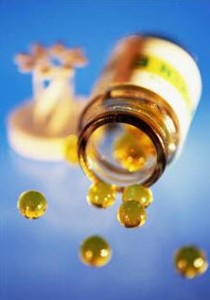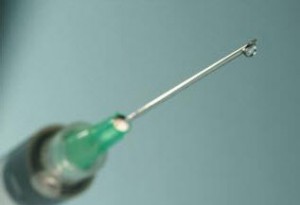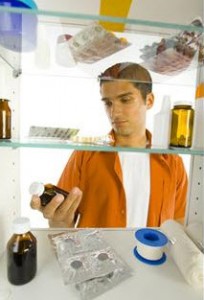
As we get ready to officially kick off summer in New England (which happens the July 4th weekend) after a very long cold winter and an unusual spring, we are all ready for some summer sun and fun! Regardless of the season you are enjoying as you read this, however, it is never the wrong time to talk about safely managing our sun exposure.
While everyone agrees that getting a sunburn is not a good thing, both for your personal comfort as well as your longer term health and wellness, in our quest to avoid a sunburn we may unwittingly be doing more harm than good to our bodies. Recent studies have shown that many sunscreens contain an ingredient shown to actually cause – not prevent – skin cancer.
In addition, while many of us pay close attention to what we eat and try to avoid pesticides and other chemicals that may cause health issues over time, many sunscreens also contain other carcinogenic ingredients that are absorbed directly into the blood stream upon application, making their effect potentially greater than that of some of the residual chemicals on the food we consume.
While there is some research that ties melanoma to “blister and peel” sun burns before age 20, there is additional research that suggests the sun may not be the cause. Until we know more, the truth is: we need some sun exposure to produce vitamin D, a proven cancer-preventor. So let’s look at how we can safely get moderate sunshine exposure while avoiding sunburns and cancer-causing chemicals.
Why We Need Sun Exposure
If you read my previous article on vitamin D, you know how important I believe this group of hormones to be to our overall health. When I originally wrote about vitamin D, I said,
“While we have always known it helps with bone health as it facilitates calcium absorption, new research is proving that higher levels of the vitamin have an impact on immune health and protect against cancer, heart health, autoimmune diseases, depression, periodontal disease, diabetes and a host of other conditions.
While adequate levels are shown to be protectors against many conditions, low levels, or deficiencies, are now linked to concerns with these same systems and conditions. Studies now show that vitamin D deficiency is rampant and far more pervasive than previously believed.
Many experts say increasing your vitamin D levels may be the single most important thing you can do to improve your health.”
Those words are as true now as ever. More and more experts are lining up to tout the benefits of vitamin D to our overall health as well as for cancer prevention. While it is possible to get vitamin D from food, it is almost impossible to get all that we need on a daily basis solely from food sources. Without question, the best source of vitamin D is 20 minutes of direct sunlight (without sunscreen) daily.
In addition to vitamin D, direct sun exposure generates photoproducts that cannot be generated from food sources. When it comes to cancer prevention and overall health, vitamin D is essential and the sun is the best possible source.
But there are times when we want or need to be outside for longer periods of time than our skin can handle without burning and no one wants a sunburn. (Early childhood sunburns have been linked to skin cancer development later on.) Hence, the multi-billion dollar, largely unregulated, sunscreen business. But let’s look at why sunscreens are not the answer.
Sunscreen and Cancer
Headlines were made not long ago when a study revealed that products containing vitamin A or its derivates are shown to increase the rate at which malignant cells develop and spread skin cancer. Sadly, almost half of the most popular sunscreens available today contain these ingredients, and it was reported that the FDA has known of the potential danger for a much as a decade now.
Vitamin A is a popular sunscreen ingredient because it’s an anti-oxidant that can slow aging. However, anyone who has been given a prescription based form of vitamin A for acne or youthfulness knows that it comes with an advisory to avoid sun exposure. Vitamin A has photocarcinogenic properties, which means that it can become cancerous through exposure to light.
The FDA studied the impact of vitamin A and found that tumors and lesions developed 21% sooner in vitamin A-laced cream than in creams not formulated with vitamin A. Since 41% of sunscreens contain vitamin A or its derivatives (retinyl palmitate or retinol) this is a significant concern for the sunscreen industry.
But beyond vitamin A, there are a number of other ingredients that cause concern, especially since sunscreen is applied to skin. Then in the heat, skin pores open and rapidly absorb the chemicals directly into the bloodstream. Unfortunately, the list of these common skin care carcinogens is too lengthy for this article so I will have to share that with you in another issue. For now I will just say that should you decide to use sunscreen, please choose an organic brand that minimizes exposure to carcinogenic and endocrine disrupting chemicals such as parabens, nitrosamines, propalene glycol, and sulfates.
Given what’s inside these products, we have to ask the question: is exposure to all these chemicals really worth it? Taking the risk of exposure to all these cancer-causing chemicals might be worthwhile if doing so truly prevented potentially fatal skin cancer. Let’s put it all in perspective. Assume for a moment that using sunscreen prevents melanoma, which we will see in a moment is not the case. (If sunscreen is the answer, then why has melanoma doubled over the past 20 years despite the introduction of sunscreen in the late 1960s? And why are melanoma rates higher among sunscreen users than non-users?)
Even if sunscreen did prevent melanoma, that benefit has to be weighed against the risks derived from lack of sun exposure.
Vitamin D and its photoproducts produced through sun exposure are proven to help prevent breast, colon and prostate cancer. (Using sunscreen inhibits vitamin D production and prevents those benefits.) About 40,000 people died from breast cancer, 32,000 from prostate cancer, and 51,000 from colon cancer. All together that’s about 123,000 deaths a year from cancers that are directly connected to a lack of sun exposure. Last year, 8,700 people died from melanoma. Seeing those statistics one must wonder if our fear is unjustified and doing more harm than good.
But now on to the bigger question: does sunscreen prevent melanoma? For those with higher risks due to having fair skin or a family history of skin cancer, it may be worth exposure to all the concerns we’ve looked at thus far if using sunscreen could truly prevent melanoma.
To date, no research has proven that sunscreen can prevent melanoma. While sunscreen may help prevent some easily treatable generally non-fatal skin cancers, no ties have been made to melanoma prevention. In fact, according to the Food and Drug Administration, “The FDA is not aware of any data demonstrating that sunscreen use alone helps prevent skin cancer” of any kind. The International Agency for Research on Cancer agrees.
Experts generally take the stand of we don’t know, but meanwhile you should keep using it. (Friends of mine in the medical field say that they feel compelled to encourage sunscreen use despite lack of evidence supporting it for fear of lawsuits.) But should we keep using something that doesn’t protect us from cancer when we know it increases health concerns and risk of other forms of cancer through its use?
The Diet Connection: Melanoma and Omega 3
If sunscreen doesn’t prevent melanoma perhaps that is because it is not the sun that causes melanoma after all.
For some time it was thought that the sun was the source of the problem and that it was excess sun exposure that would lead to melanoma. That link is now being questioned. One recent study showed that people working exclusively inside had higher rates of melanoma than those whose jobs required them to be both inside and outside.
Another study indicated that melanoma occurs more often on the soles of the feet than on the hands, even though it’s clear that hands would have significantly more exposure to the sun than the bottom of the feet. And melanoma is more common in northern latitudes than in southern regions where there is greater sun exposure.
There are some researchers currently trying to make a connection to chlorine exposure and melanoma. They believe that chlorine contact with our skin due to drinking and bathing/showering in chlorine-treated water as well as swimming in chlorinated pools may be the cause. Studies in Belgium have connected fatal melanoma to the consumption of chlorinated water. It’s not a leap to me to connect cancer to contact with a chemical substance, and while research continues on this theory, so we don’t know for sure yet, it is an interesting one.
It’s not a leap to me to connect cancer to contact with a chemical substance, and while research continues on this theory, so we don’t know for sure yet, it is an interesting possibility. (It would certainly explain help explain how melanoma gets on the bottom of feet, since standing in a shower or pool repeatedly over time would enable chemical absorption directly into the blood stream. Twice as much chemical substances are absorbed through the skin than through the digestive tract.)
Though perhaps the sun may have a supporting role (in exacerbating the chlorine or other chemical impacts, for example), one thing is clear, the sun is not the sole culprit. Until we not only know, but also have an effective way to avoid the true cause, our best defense is prevention. The key to preventing melanoma, it turns out, is directly related to diet.
In 2001, the National Academy of Sciences published a study indicating that omega 3:6 ratios were the key to preventing skin cancer. As I shared in a prior article on omega 3, it is not that omega 6 is bad; we need both omega 3 and omega 6 to be healthy. The problem is that historically we have had a 1:1 balance of omega 6:3. With the advent of vegetable oils such as corn oil, canola, sunflower, sesame, and safflower oils, we’ve gone from very little vegetable fat to consuming more than 70 pounds a year.
These oils are pervasive in processed food today, and our omega 6:3 balance has shifted to more like 20 or 50 to 1; it is no longer evenly balanced. It is this imbalance that scientists believe creates the problem. A prestigious cancer journal reported that excess omega 6 can lead to the proliferation of cancerous cells, including melanoma, while long chain omega 3 fatty acids act as inhibitors to that growth.
An Australian study showed that simply by eating fish rich in omega 3, without changing anything else in the diet to reduce omega 6, resulted in a 40% reduction in melanoma.
In addition, studies have shown that people who eat more omega 3s are able to increase their burn threshold. This allows them to enjoy healthy sun exposure for longer periods of time without risk of burning or developing skin cancer. Another great reason to balance omega 3s!
Whenever my kids and I are heading outside for the day, we increase our omega 3 consumption (fish day!) and also supplement after the sun exposure. If we know in advance we are heading for a day at the beach on Saturday, for example, I start increasing our omega 3s a few days before. Doing this has enabled us to bring our sunscreen use down to a minimum and still avoid burns. And yes, when we use it, we choose organic products!
Safe and Healthy Vitamin D Exposure
Most everyone agrees that while we need moderate sun exposure, the key is to avoid burning. Burning has been connected to skin cancer and logically, burning is the natural way of letting our body knows that we have had enough sun.
To avoid burns, get your sun exposure earlier or later in the day when the UV rays are less likely to cause burning (though you may need to be outside a bit longer). Build up your sun exposure slowly over time so that gradually you can spend more time in the sunshine before you are at risk for burning.
Seek shade midday and use hats and clothing to protect you. (I am not a fan of sunscreen-laced clothing as the chemicals that are used to provide the sun barrier are present on the clothes and can be absorbed by the skin when you sweat.)
Avoid sunscreen use whenever possible. But for those times when you must go outside for longer than would be safe for you to avoid a burn, seek a natural organic sunscreen without retinol palmitate or retinol and without parabens and other carcinogens. Badger makes a good one that you can find in a health food store or on Amazon.com.
And perhaps most importantly of all, whether you choose to use sunscreen or not, examine your diet with a goal of omega 6 consumption and trying to balance the omega 3:6 ratio in your diet. Eat more fish and consider taking a high quality omega 3 supplement daily, or preferably with every meal. Try additional supplementation before a longer day in the sun.
At a minimum, it will make your body healthier overall and it may well prevent skin and other cancers. Omega 3 consumption can also improve your sun tolerance and reduce your burn risk, both short and longer-term. And with the ozone depletion in today’s environment, that’s something we can all benefit from.
To your wellness and health: your true wealth!
Inger
Author: Inger Pols is the Editor of the New England Health Advisory and Author/Creator, Finally Make It Happen, the proven process to get what you want. Get a free special report on The Truth About Sugar: It’s Not All Equal at www.IngerPols.com
Photo Source: Microsoft Clip Art


 Recently, a study claimed that taking vitamins has no merit. It’s not new news: pharmaceutical-funded studies have been claiming this for some time (because vitamins can’t be patented and if you take them, you might not need their drugs.) While the study says vitamins in isolation don’t work (I agree), it also claims that multivitamins have no merit (I disagree: synthetic multivitamins have no merit, but whole food multi-vitamins have been shown to have health benefits.)
Recently, a study claimed that taking vitamins has no merit. It’s not new news: pharmaceutical-funded studies have been claiming this for some time (because vitamins can’t be patented and if you take them, you might not need their drugs.) While the study says vitamins in isolation don’t work (I agree), it also claims that multivitamins have no merit (I disagree: synthetic multivitamins have no merit, but whole food multi-vitamins have been shown to have health benefits.)
 This time of year, there are lots of cold and flu viruses going around and if you get one, you know that there isn’t much your doctor can do. While antibiotics can fight bacteria, there are no prescriptions for viruses. That doesn’t mean, however, that nature hasn’t supplied us with some great natural remedies instead.
This time of year, there are lots of cold and flu viruses going around and if you get one, you know that there isn’t much your doctor can do. While antibiotics can fight bacteria, there are no prescriptions for viruses. That doesn’t mean, however, that nature hasn’t supplied us with some great natural remedies instead. In this article, I’m going to cover a topic of concern for most men: prostate health. But this topic is important for female readers too. This information will likely be helpful to someone you love who does have a prostate AND you’ll also find much of this information applies to breast or uterine health as well. Many scientists consider prostate cancer in men to be the equivalent of breast cancer in women because it is brought about by the same conditions, factors and imbalances that simply manifest in different sexual organs because of gender. So ladies, there is something here for you, too.
In this article, I’m going to cover a topic of concern for most men: prostate health. But this topic is important for female readers too. This information will likely be helpful to someone you love who does have a prostate AND you’ll also find much of this information applies to breast or uterine health as well. Many scientists consider prostate cancer in men to be the equivalent of breast cancer in women because it is brought about by the same conditions, factors and imbalances that simply manifest in different sexual organs because of gender. So ladies, there is something here for you, too.
 Follow me on Twitter
Follow me on Twitter 